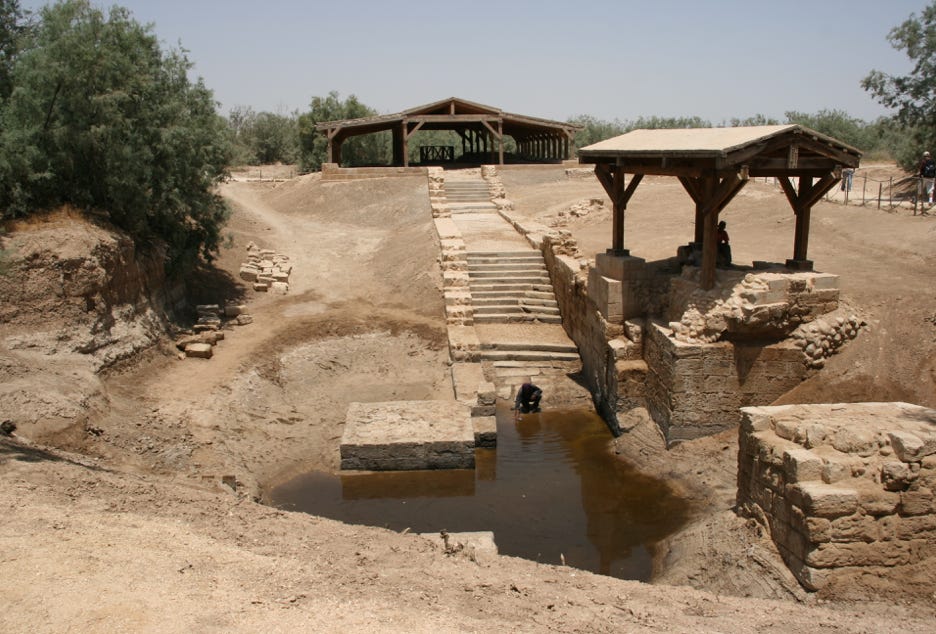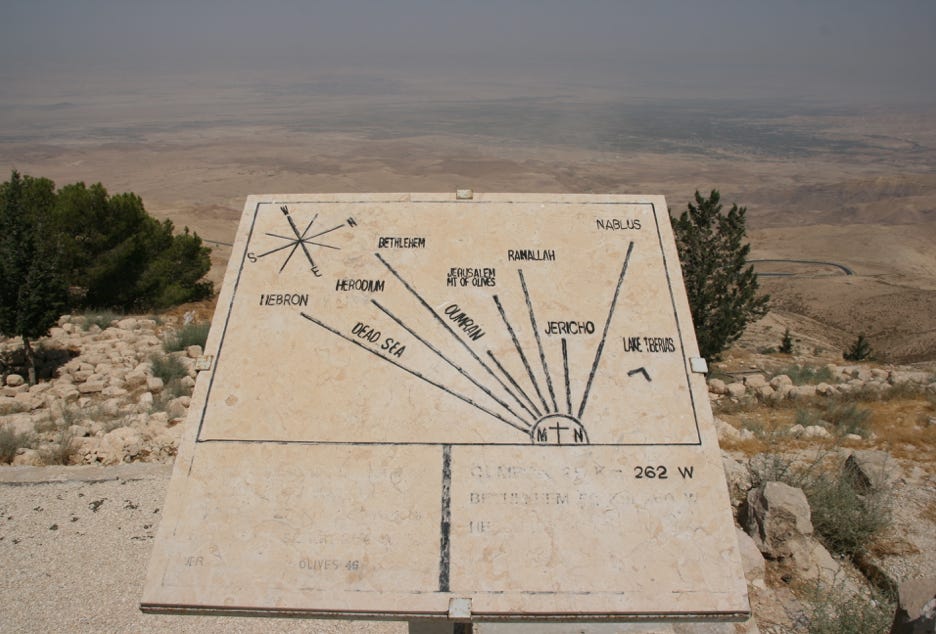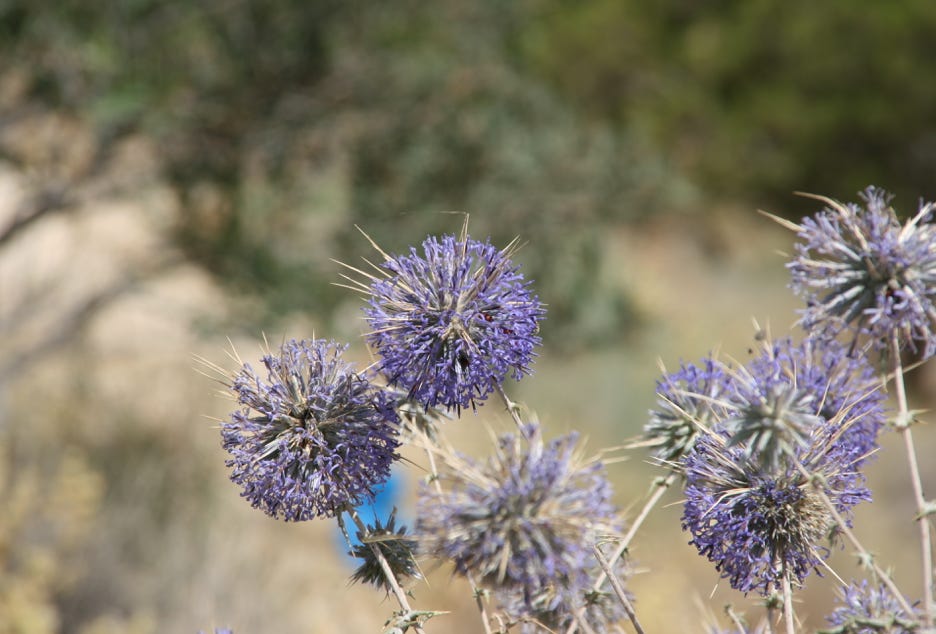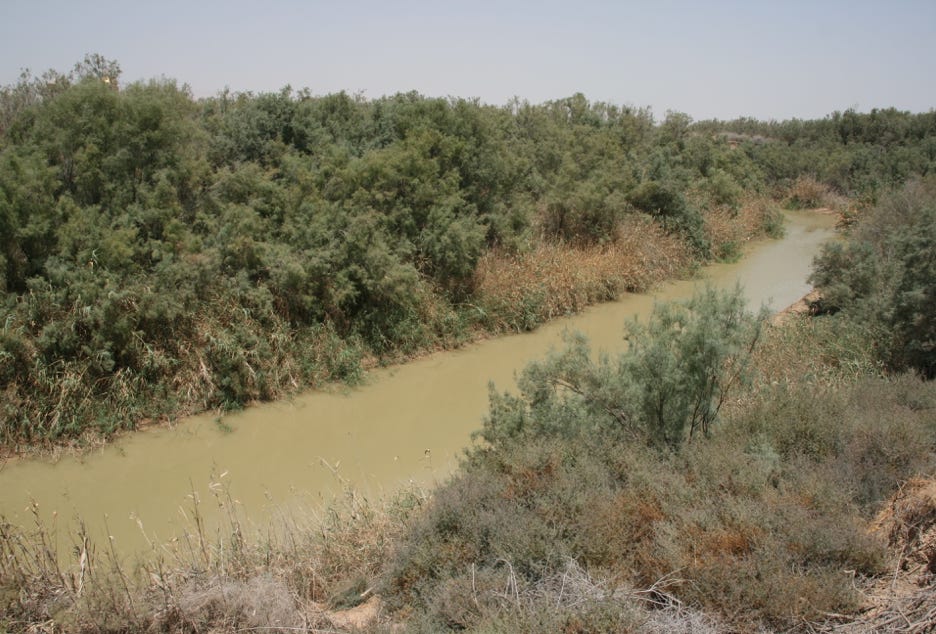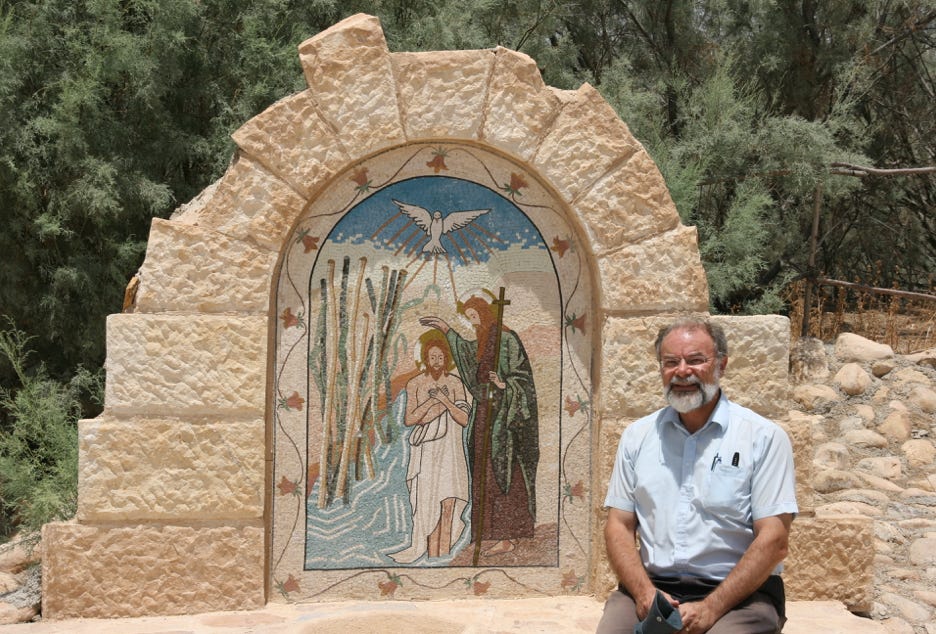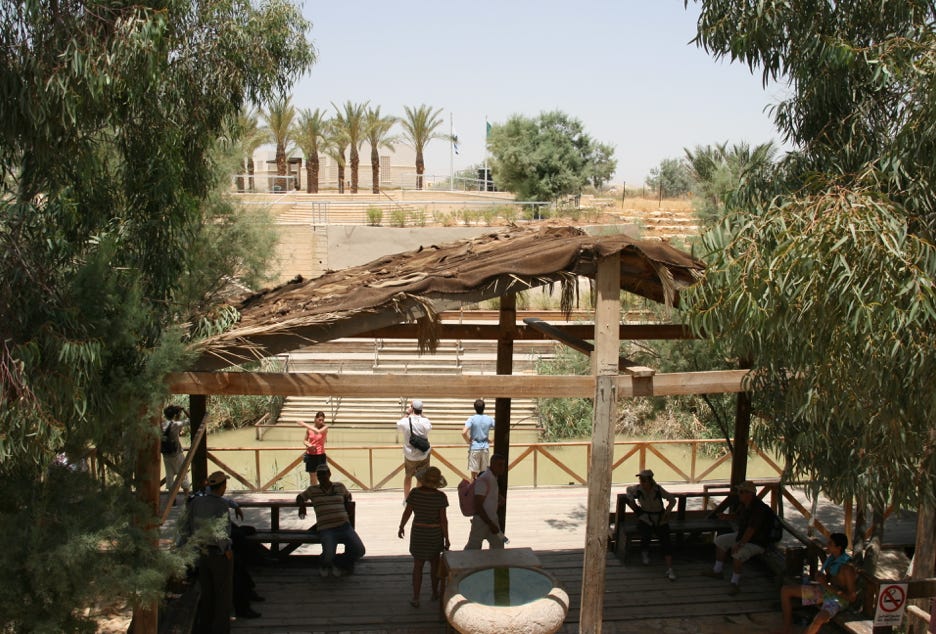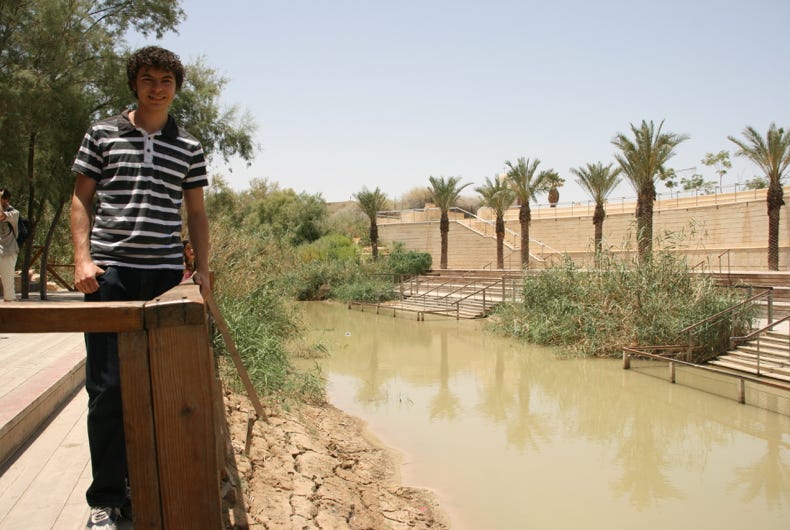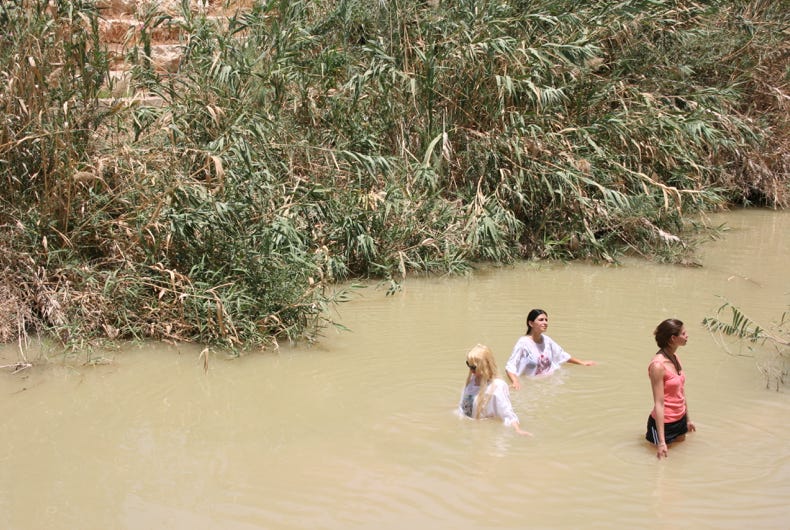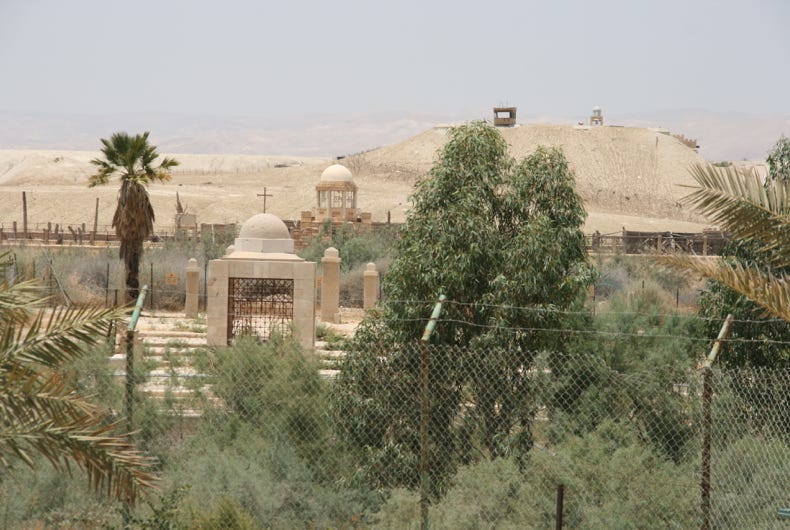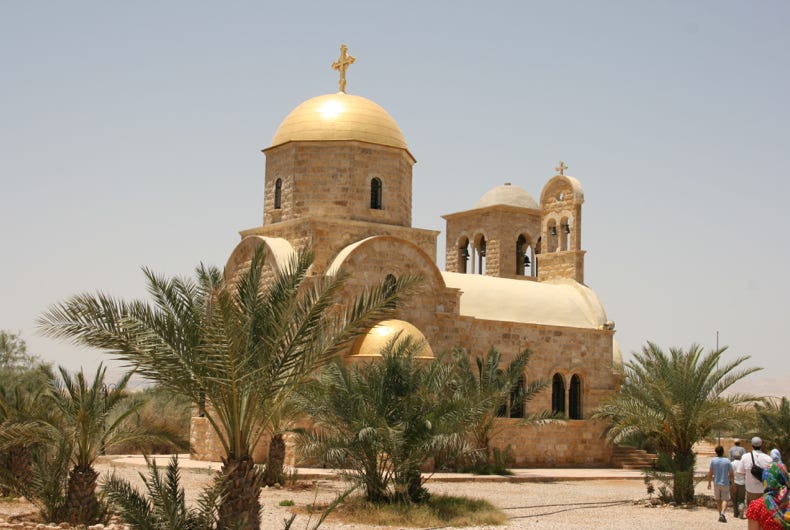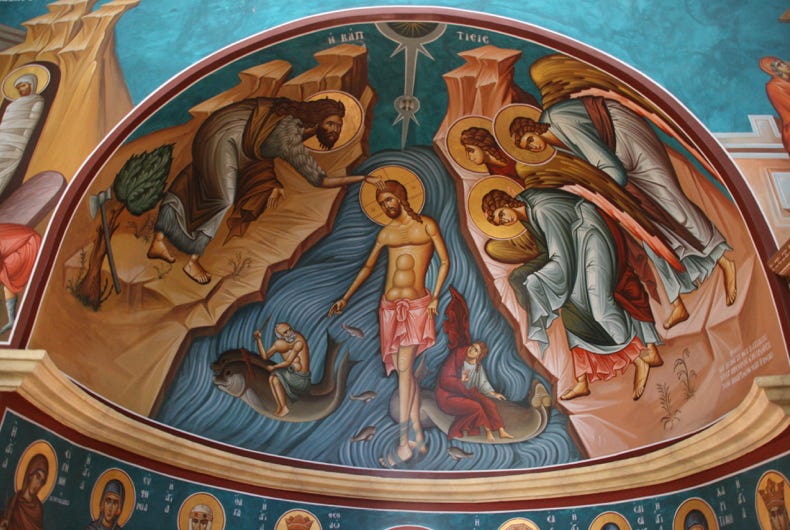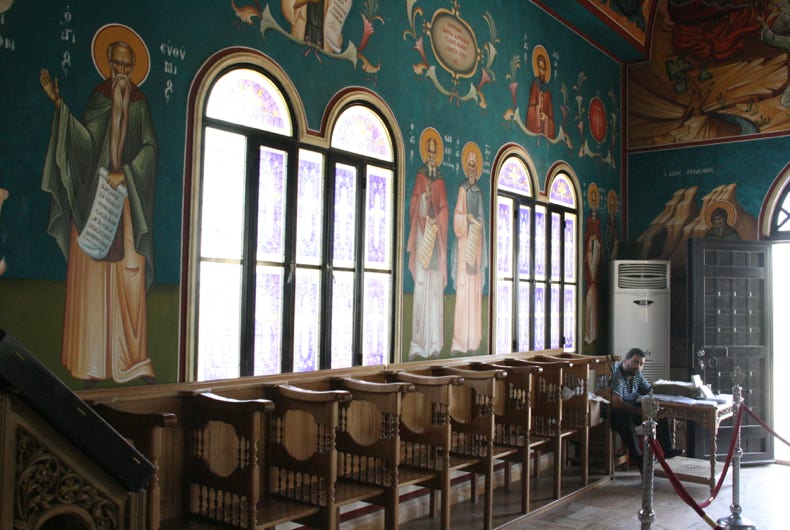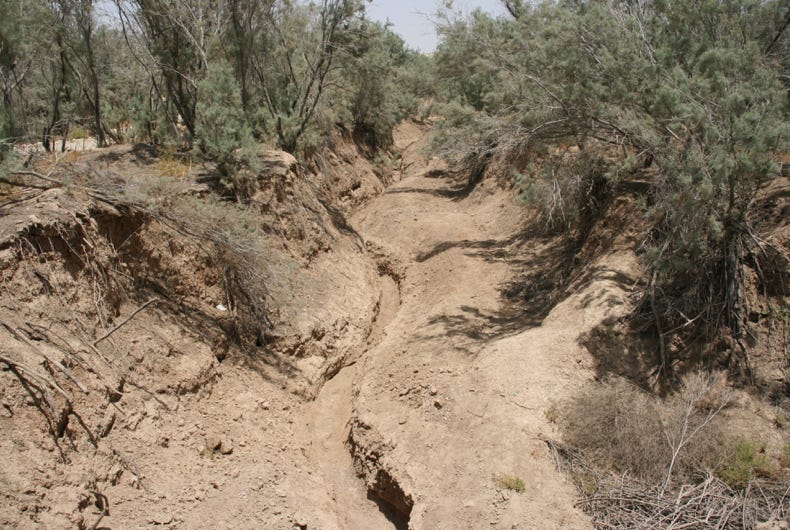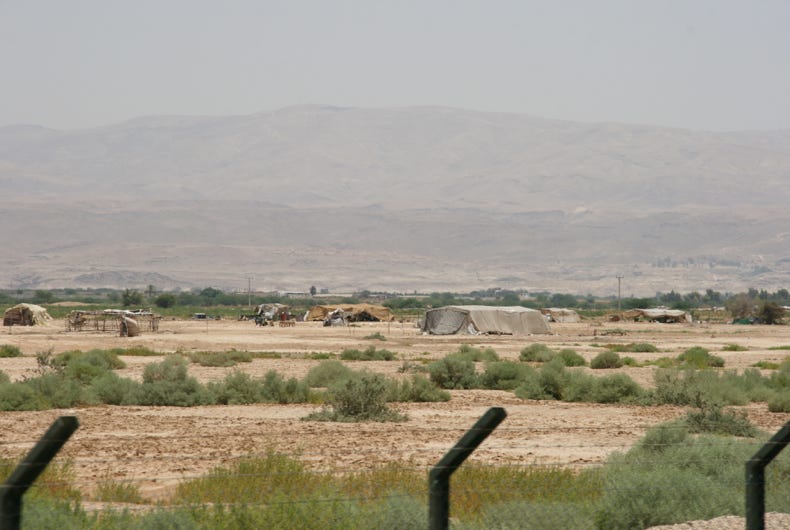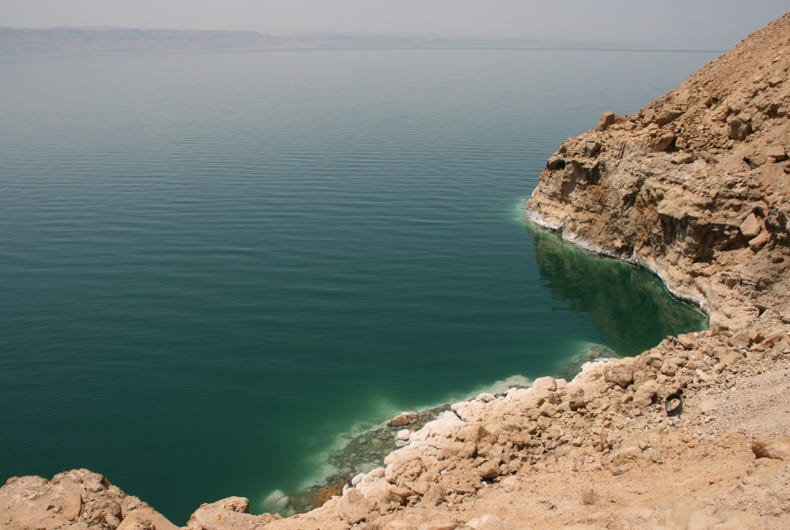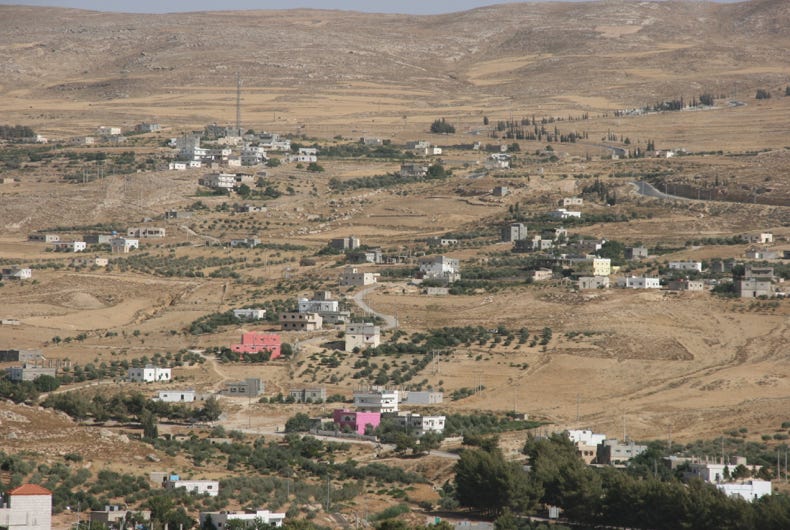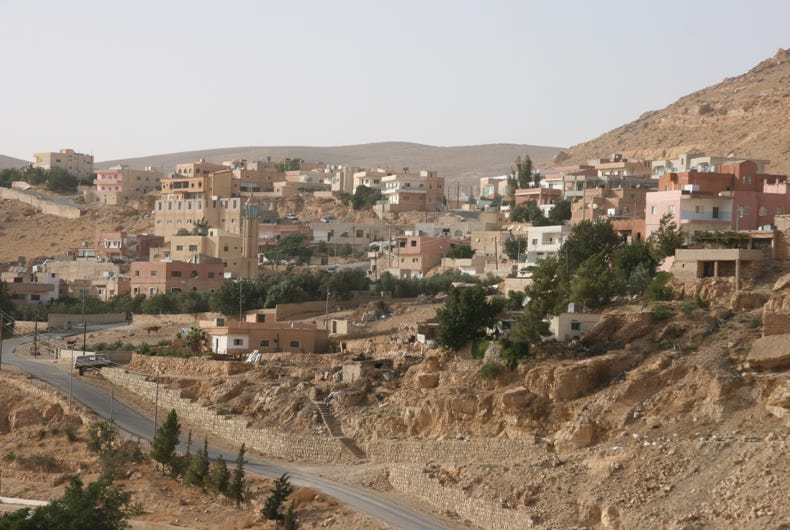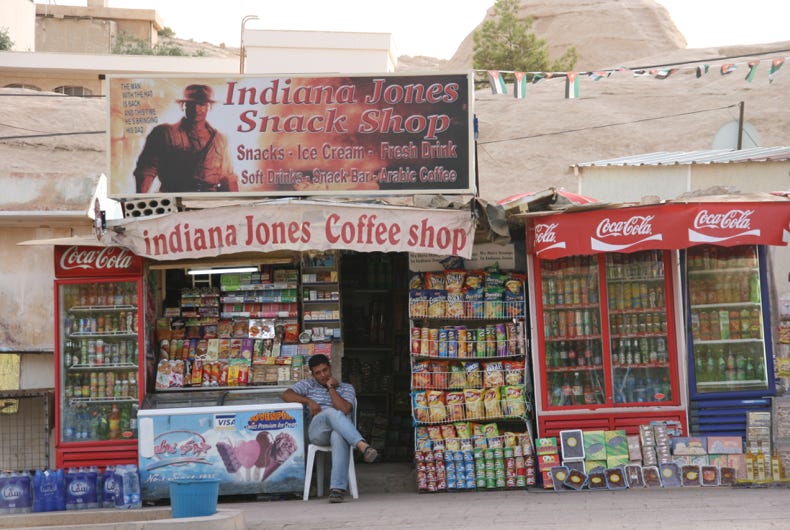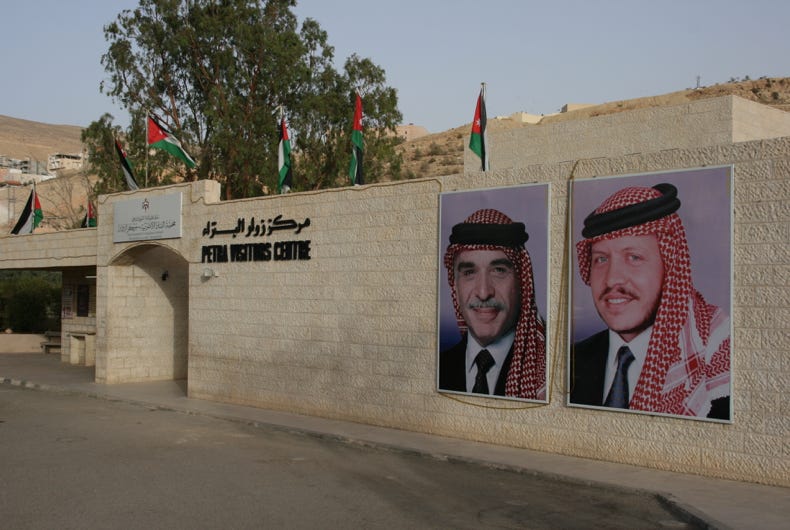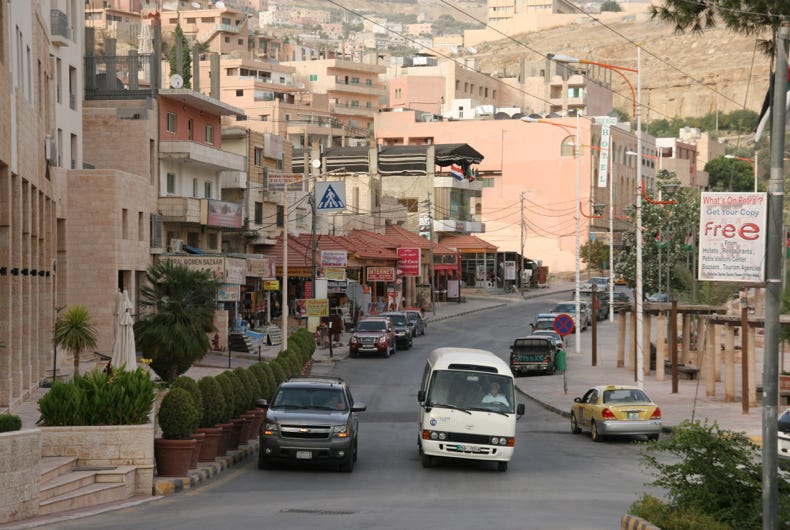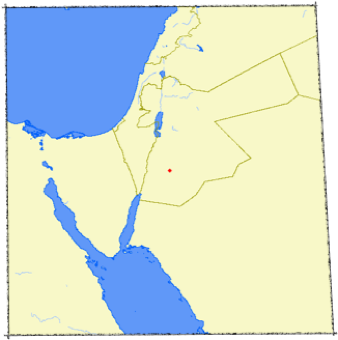
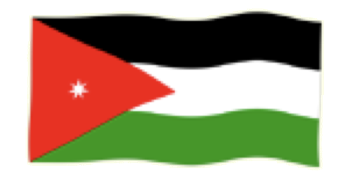

This morning, immediately after breakfast, we collected a small rental car (a Citroën C3) so we could make our own circuitous way from Amman south to Petra, Jordan’s ‘must-see’ destination. Leaving at 9 am, we arrived at Petra at a little after 6 pm, having driven 312 kilometres. It was not a fast drive, but it was a fascinating one, though some sublimely harsh desert landscapes and visiting several absolutely unique locations.
After successfully navigating our way out of Amman, we headed to the south-west, and after passing through Madaba (where the workshop was held just a few days earlier), we stopped at Mount Nebo, about 10 kilometres further on. Mount Nebo is the place where Moses and the Israelites first saw The Promised Land towards the end of their escape from captivity in Egypt. Having seen The Promised Land (Israel), Moses never made it there as he died on Mount Nebo shortly after arriving.
Today, the top of the mountain is dotted with small chapels, mostly under the control of the Franciscan Order of the Catholic Church. Sadly in some ways, a large new complex is under construction on the summit of the hill, dominating the landscape.
It was an almost surreal experience to stand on Mount Nebo and look across the River Jordan and the Dead Sea into Israel, seeing the same view that Moses saw after the ordeal of crossing Sinai. Unfortunately, the summer haze made our view a little difficult to photograph, but the accompanying picture here on the left will give you some idea. The Dead Sea can just be seen through the haze on the left of the photo (between the trees), and the city of Jericho is just off to the right. The compact scale of the Biblical area was highlighted for me when I read on the sign that Bethlehem (which is on the other side of Jerusalem from Mount Nebo) was just 50 kilometres away.
Our second stop was about half an hour’s drive away. Bethany-Beyond-the-Jordan, or as it is known in Arabic, Al-Maghtas, is the site on the River Jordan where Jesus was baptised by John the Baptist, and just a short distance (about a kilometre) from the small hill where the prophet Elijah was said to have ascended into heaven on a chariot. Located in a military controlled zone on the Israeli-Jordanian border, this was a closed area until 1994 when an agreement was reached to open the area as part of the peace accord. Even now, we were not permitted to drive all the way to the baptism site, but we had to travel in special trucks under army supervision.
The photo at the top of today’s page shows the actual site of Jesus’ baptism; the shelter in the background is protecting some ancient mosaics that formed the floor of a very early Byzantine Christian church that was built on the site. When Jesus was baptised, there was, of course, much more water flowing in the river than today, and the water hole in the photo was part of the flowing river. Today, most of the water is taken for irrigation upstream by the Israelis, leaving just a trickle to flow along the course of the river and into the Dead Sea.
After seeing the original baptism site, we walked a little further to the new baptism site on the main channel of the River Jordan. It was remarkable to see just how narrow the River Jordan is, marking as it does one of the world’s more significant borders (see the photo on the right which shows Israel on the left of the photo and Jordan on the right, about 5 or 6 metres apart). While we were there, several of the other visitors (who were mainly from Russia) donned white robes and immersed themselves in the river, being careful not to go to the other bank of the river just a metre or two away from them and thus become illegal immigrants into Israel.
Following the visit to Bethany-Beyond-the-Jordan, we drove south along the eastern edge of the Dead Sea. This was, I am sure, the lowest I have ever been in altitude, as the area is about 400 metres below sea level. Andrew would have loved to go for a swim in the Dead Sea as he had heard you can stay afloat while making zero effort (this seemed to appeal to him!), but we agreed that the cost was prohibitive, both at the several resorts (which charged US$60 per person to access their beaches) and at the beaches used by local people (which charged US$35 per person to enter their enclosures). We did, however, stop at a few places to admire the blue colour of the water and the sparkling white encrustations of salt along the shorelines.
Having arrived at Petra we found our hotel and checked into our room. It was, of course, too late to start exploring the ancient monuments of Petra – a treat we will save for first thing tomorrow morning.
We did, however, do a reconnaissance of Petra, calling in at the Visitors’ Centre and collecting some informative brochures, checking out some of the local shops, and finding a nice little café where we enjoyed a Bedouin style dinner. Andrew rounded off the experience with an evening swim. All in all, it was a thoroughly enjoyable day!

